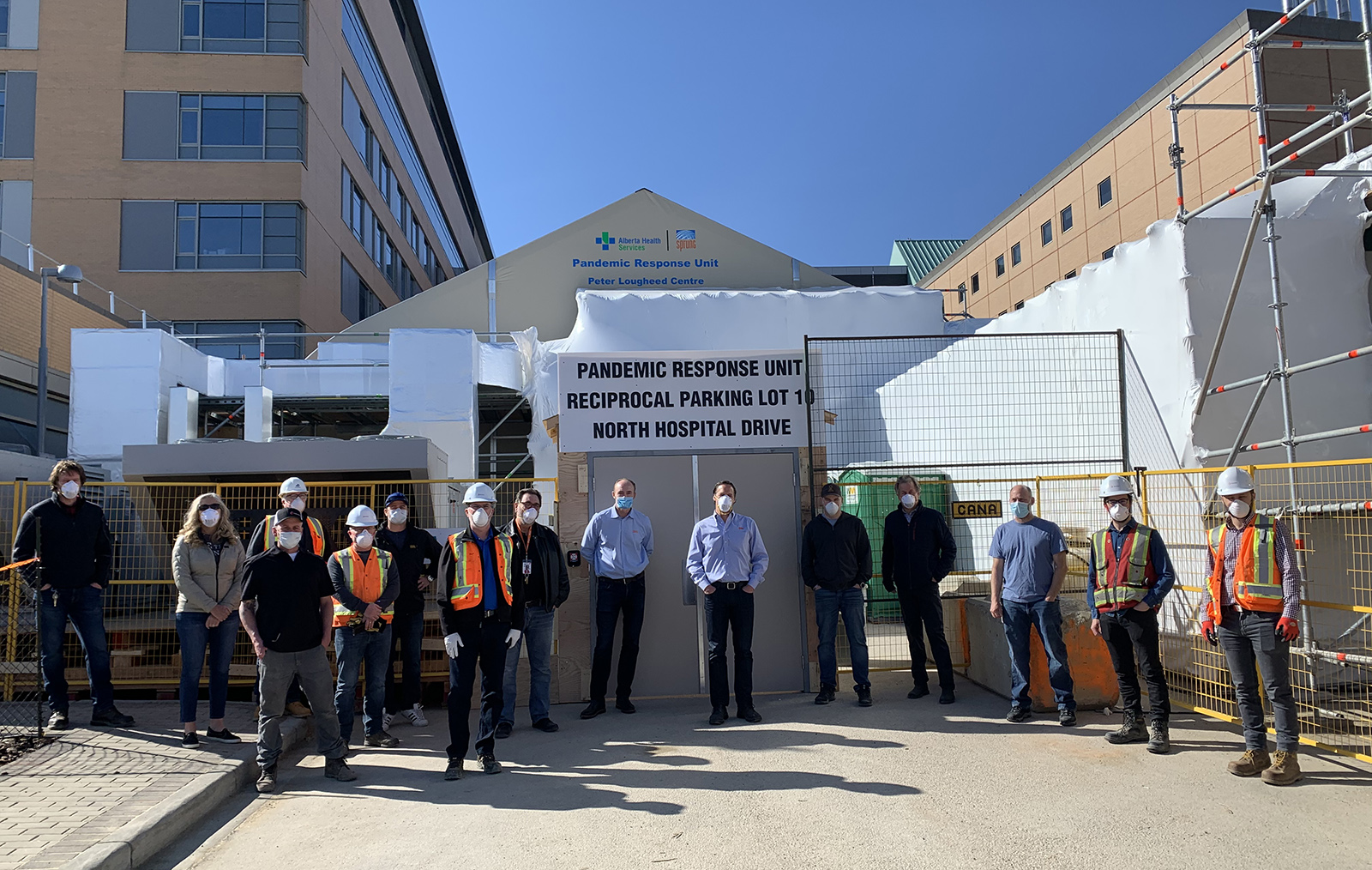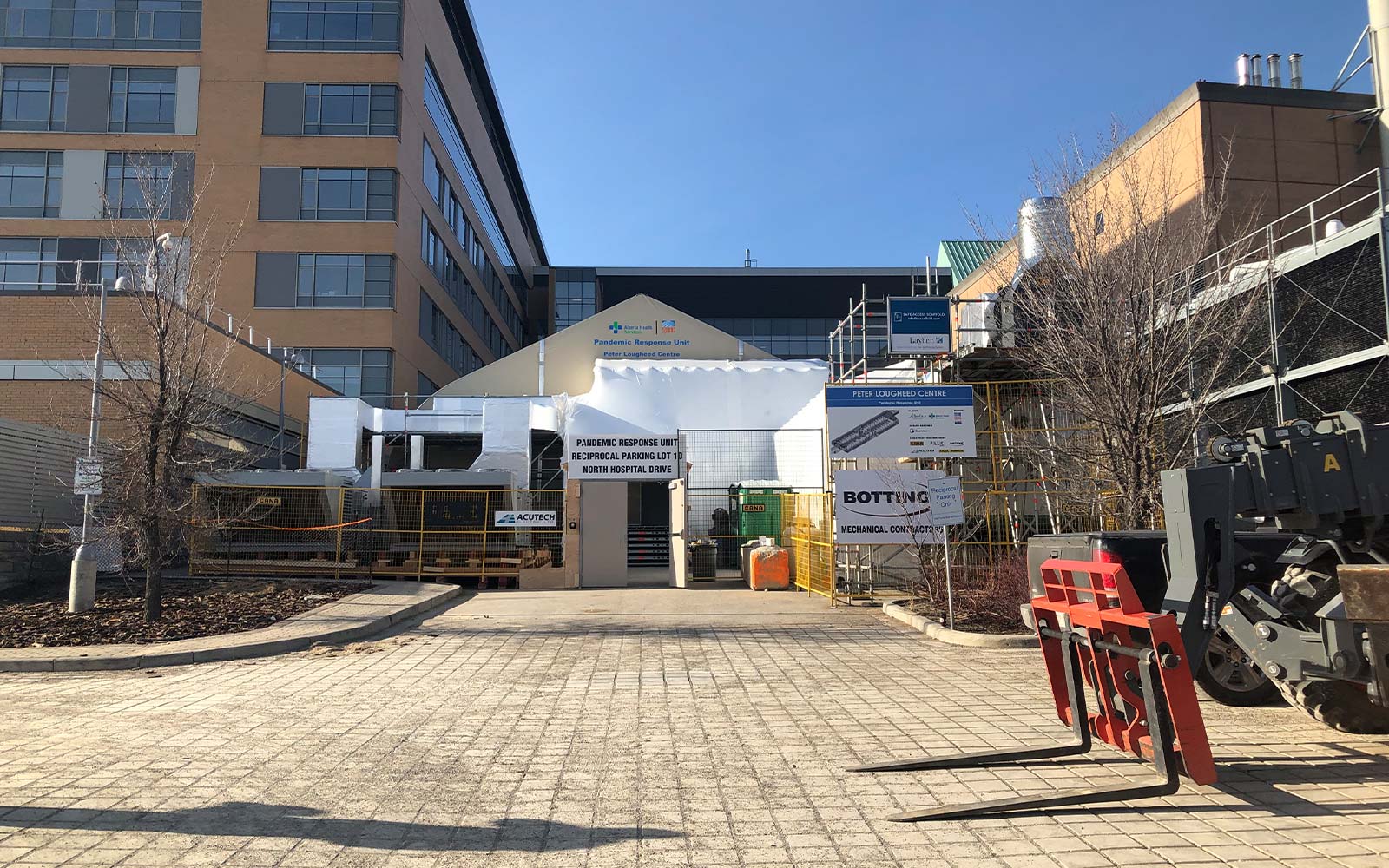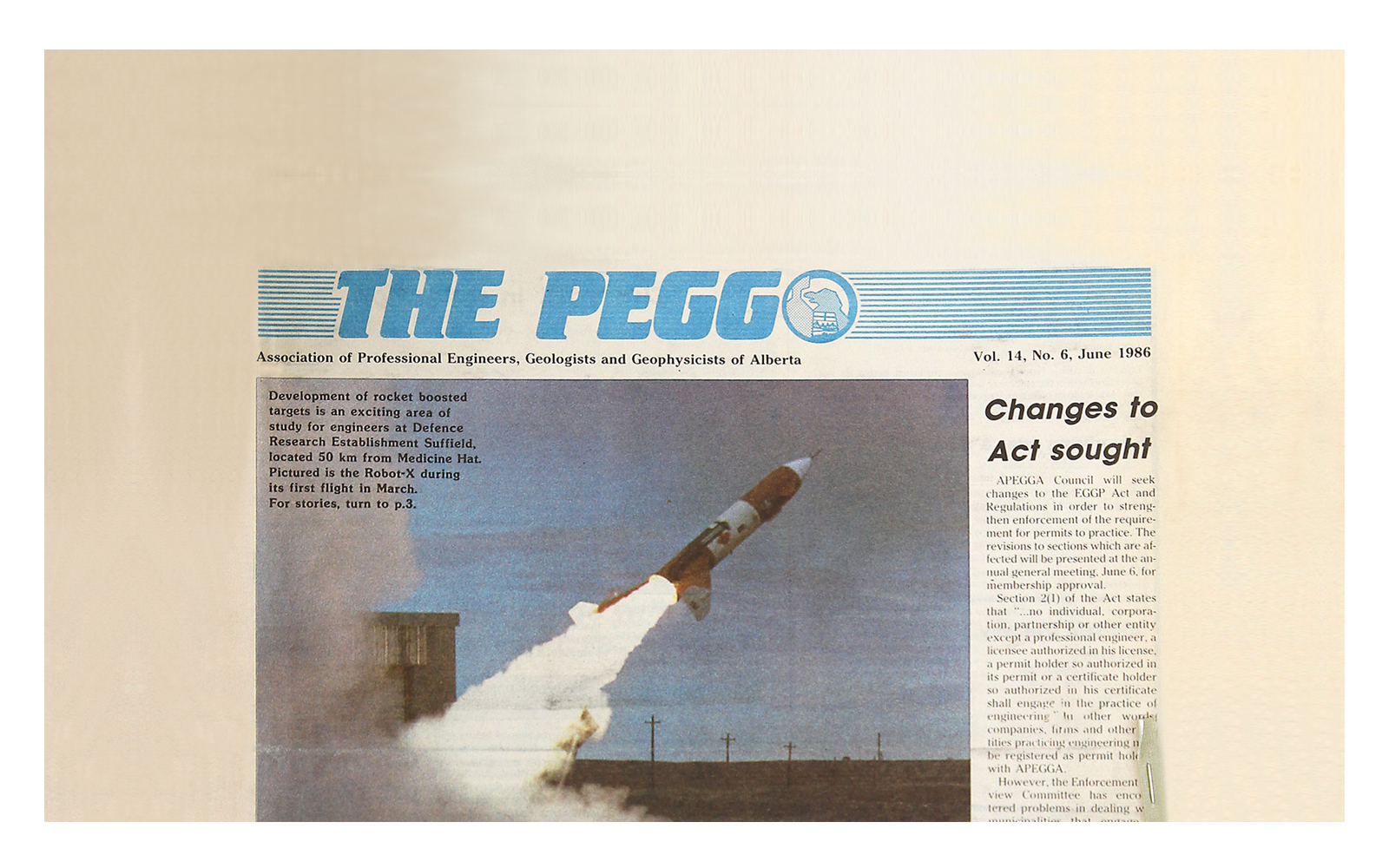Photo courtesy of Stantec
Rising to the Challenge: Medical Facility Constructed in Record Time
How long does it take to build a hospital?
During a pandemic: three weeks.
When the World Health Organization declared COVID-19 a global pandemic on March 11, 2020, Alberta needed to prepare for a worst-case scenario that saw hospitals buckling under a massive influx of patients—and it didn’t have much time.
On April 3, Alberta Health Services (AHS) approved the construction of a temporary COVID-19 Pandemic Response Unit beside Calgary’s Peter Lougheed Centre. As soon as the official go-ahead came through, a team of local companies and contractors collaborated, designed, and built the temporary treatment centre. By April 25, the facility opened with 67 beds ready to handle a spike in COVID-19 cases.
“I’ve never been part of a project that moved that fast,” explains professional engineer Jeff Rent, principal for Stantec’s buildings mechanical department. “We had all the disciplines there, and there were zero deficiencies. The contractor completed all the work required for the building to be occupied.”
The project was also a demonstration of conquering adversity: with Stantec having closed its offices in March, the project team had to conduct its work from home and communicate through video chats. As well, access to the hospital grounds was—and still is—extremely limited and closely monitored.
Protecting the health and safety of all Albertans
Teamwork was key to the project’s success: the hospital was designed by Stantec’s professional engineers and built by CANA Construction inside an assembly donated by Sprung Structures. Local suppliers helped make the temporary treatment centre a reality.
“AHS had wonderful leadership. I don’t think this would have happened without the project management that they had in place. There was a lot of team building, consensus building, and decisions happened at an incredible pace compared to normal,” remembers Rent.
One example of the quick turnaround is the design and delivery of the hospital’s ventilation units. They usually take 12 to 16 weeks to deliver, Rent says—and that’s after shop drawings are approved. Engineered Air, a local company, delivered the units to the site in only eight days.
A 3D view of the temporary COVID-19 treatment centre at the Peter Lougheed Centre hospital in Calgary.

Image courtesy of Stantec
Preparing for the worst-case scenario
On March 5, 2020, Calgary counted its first presumptive case of COVID-19. One week later, the city put its emergency plan into place and cancelled the Calgary Stampede for the first time in 100 years.
By March 13, there were 34 confirmed cases in Alberta, growing to 502 by March 26. The province braced for the possibility of more than a million cases by mid-May and started preparing the infrastructure needed to supply an extra 1,650 hospital beds.
“It was predicted that the peak would top out and then start coming down in about three months, so we were building a short-term facility. It was initially designed to be a MASH-style tent: zero services, open bed set-up. However, what we ended up delivering for the budget that was set aside was essentially a full hospital. And we were able to fit it all in within budget and schedule,” Rent explains.
Fortunately, aggressive pre-emptive measures such as social distancing, wearing masks in public, contact tracing, and widespread testing have kept Alberta from realizing that worst-case scenario so far.
Still, that can change in an instant, so the temporary facility was built to serve longer term if necessary—details such as heat-traced drain lines and insulation ensure the facility can operate through the winter.
“It’s great we were able to contribute to the fight. At the time, there was a lot of support for health-care workers, but everyone else was looking around asking, ‘What else can we do?’ This was something that, as an engineer, you can use your professional expertise towards a common goal that the entire society is fighting for.”
Stantec and seven other companies were instrumental in constructing a temporary treatment centre geared towards supporting a potential influx of patients due to the pandemic.

Photo courtesy of Stantec
The construction of the temporary COVID-19 treatment centre at the Peter Lougheed Centre involved a wide selection of great Alberta talent:
- Alberta Health Services
- Sprung Construction
- Stantec
- CANA Construction
- Falkbuilt
- Engineered Air
- Botting
- Acutech Electric
As COVID-19 cases rose inside Alberta’s largest city, Stantec and a team of eight companies set out to create a turn-key solution for a new 67-bed temporary expansion to Calgary’s Peter Lougheed Centre hospital. Video courtesy of Stantec.



